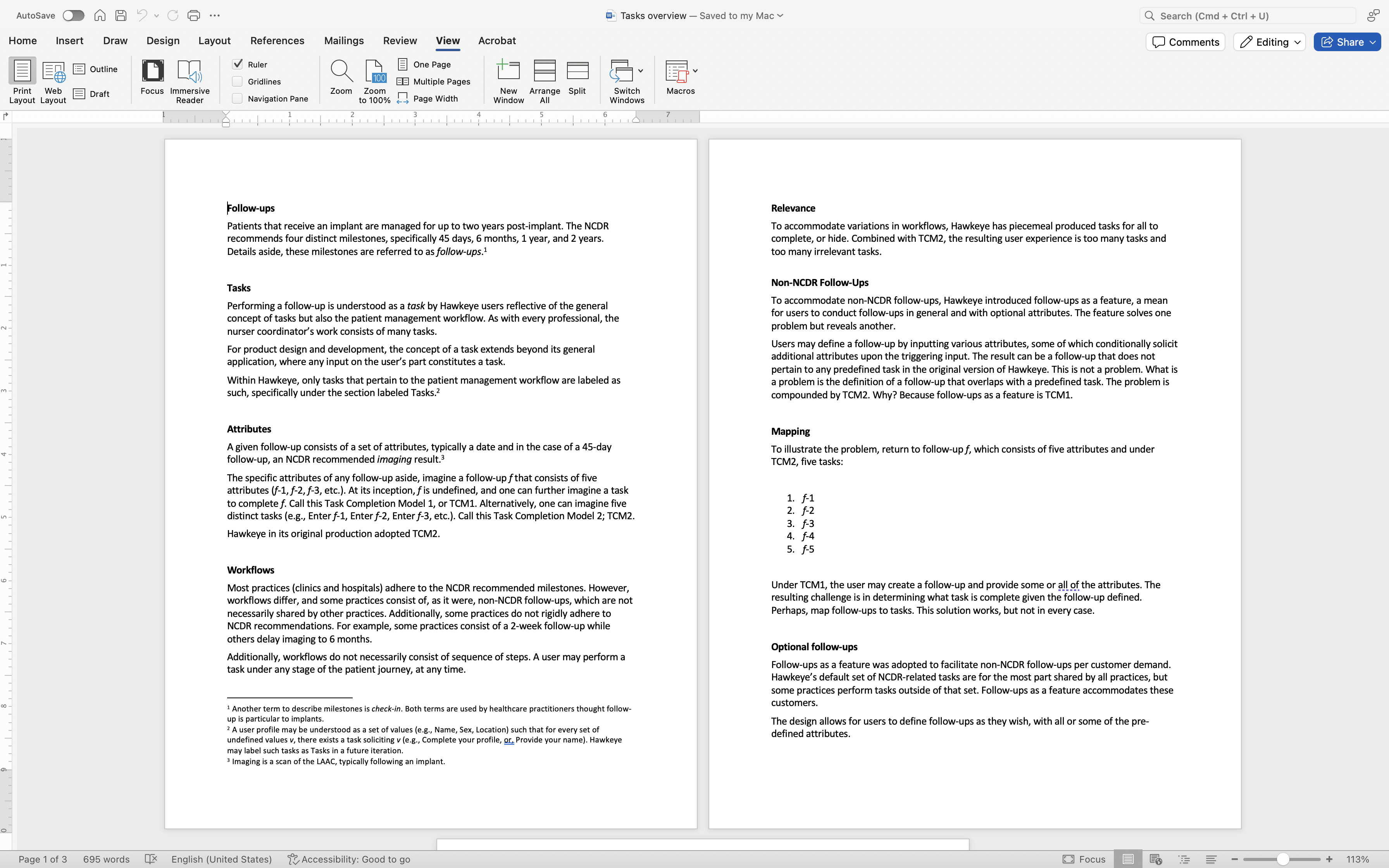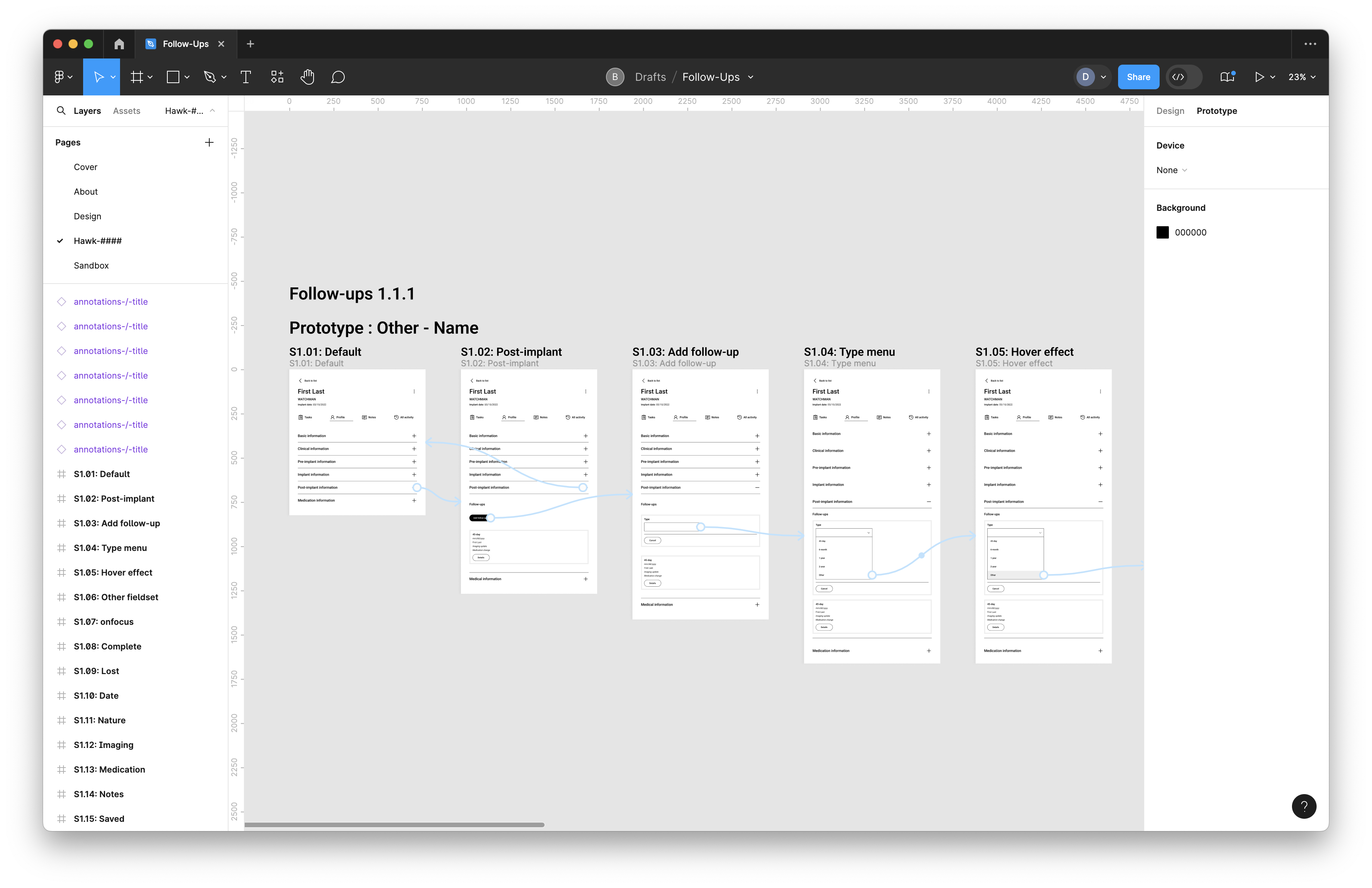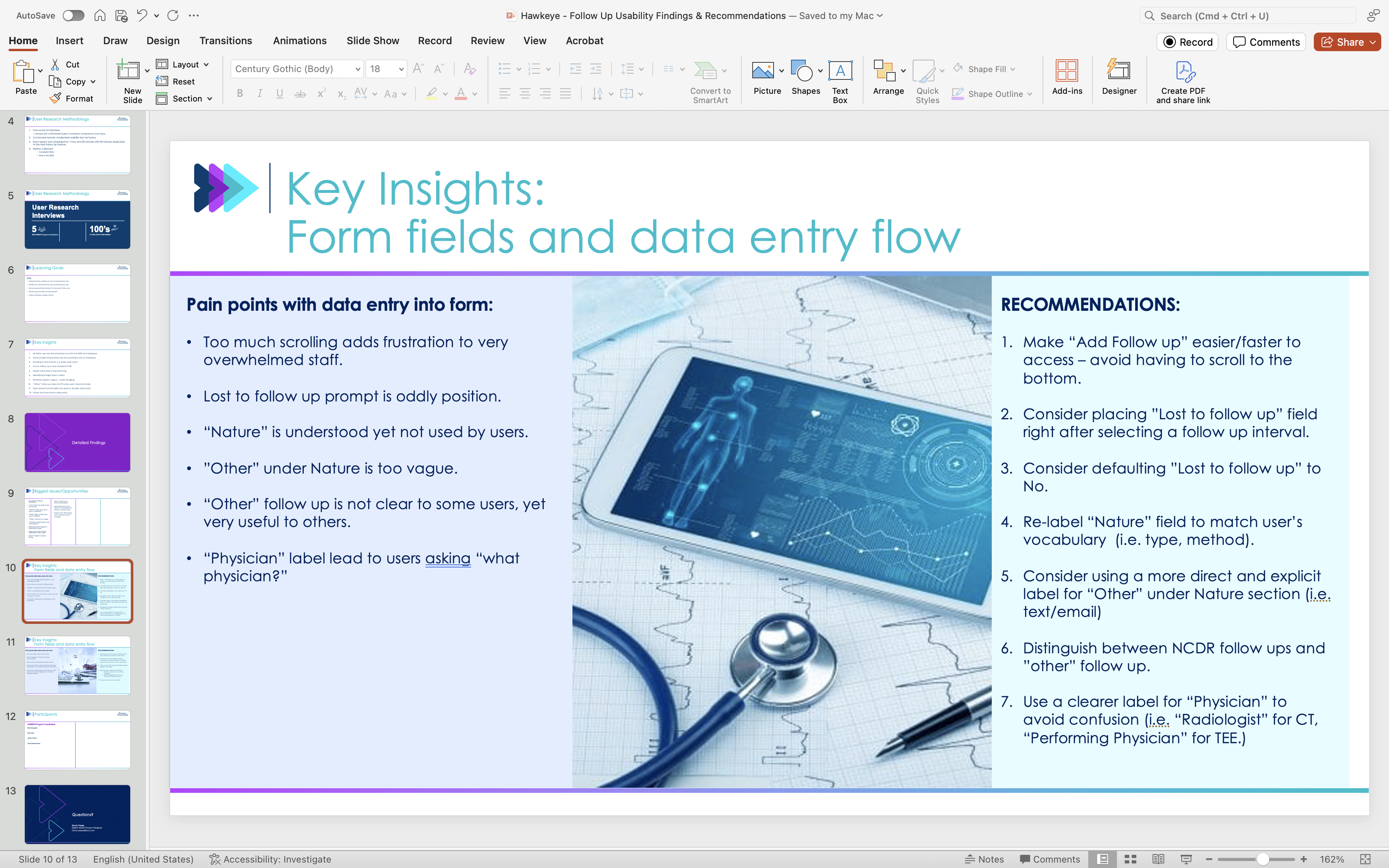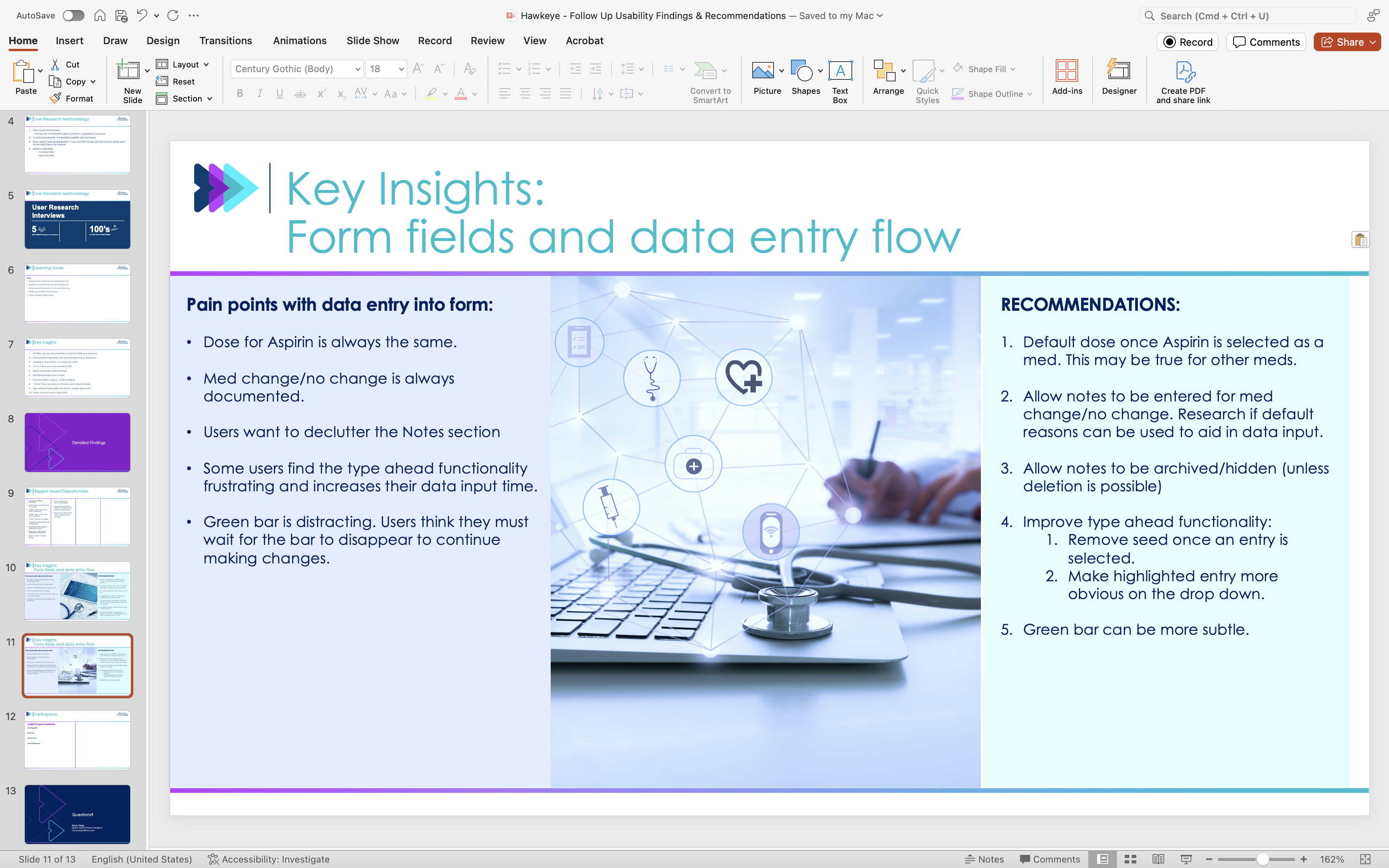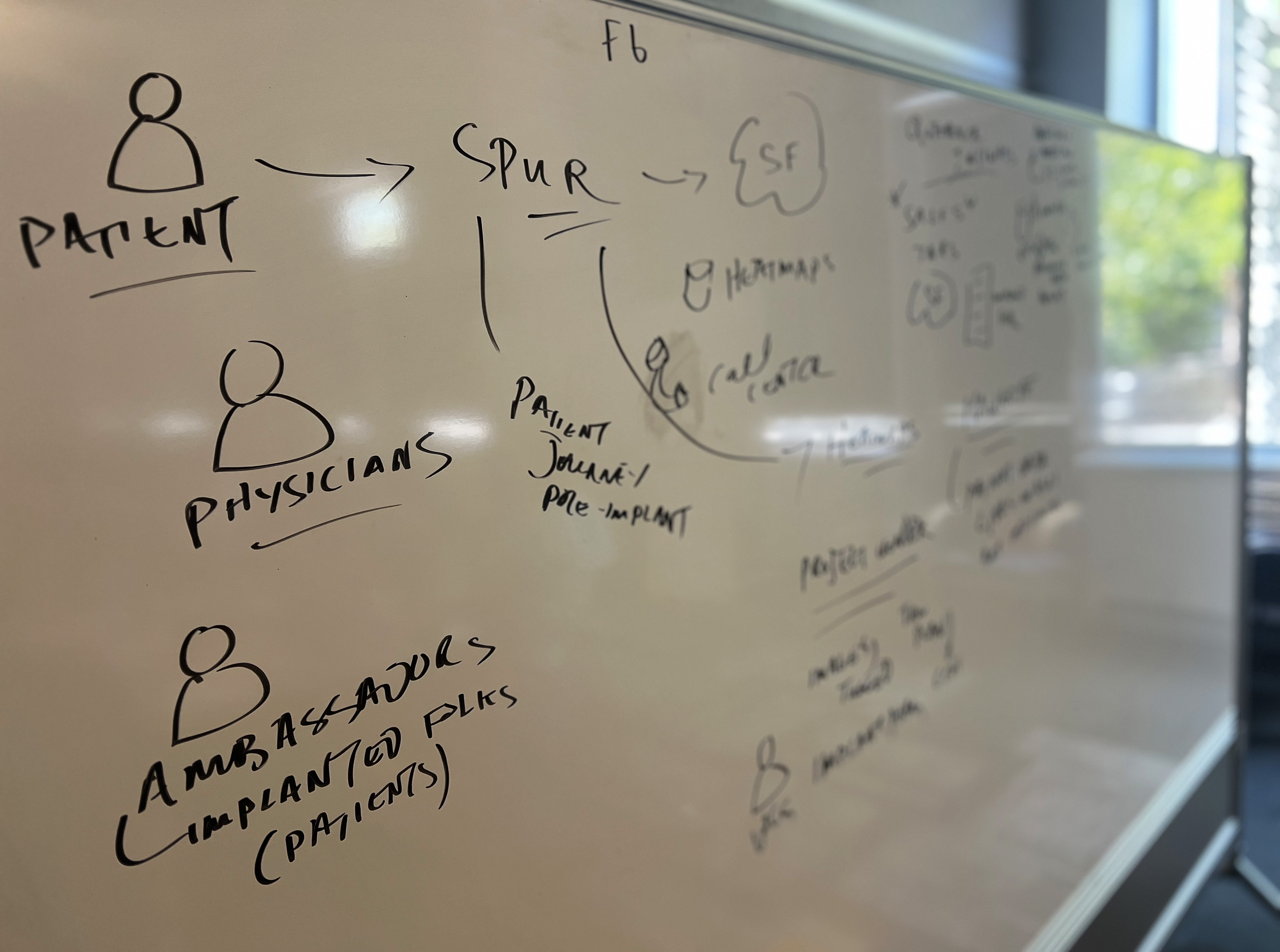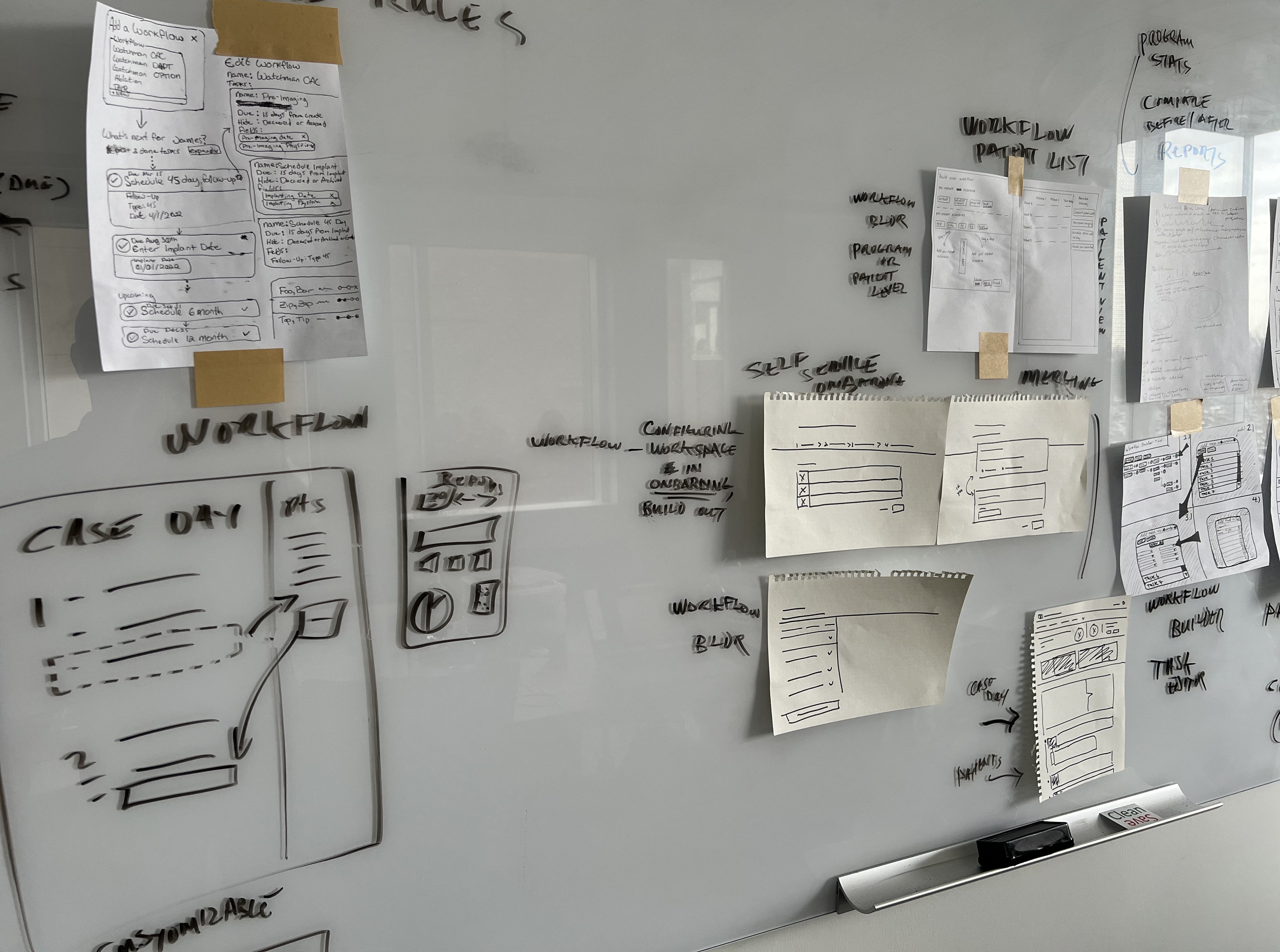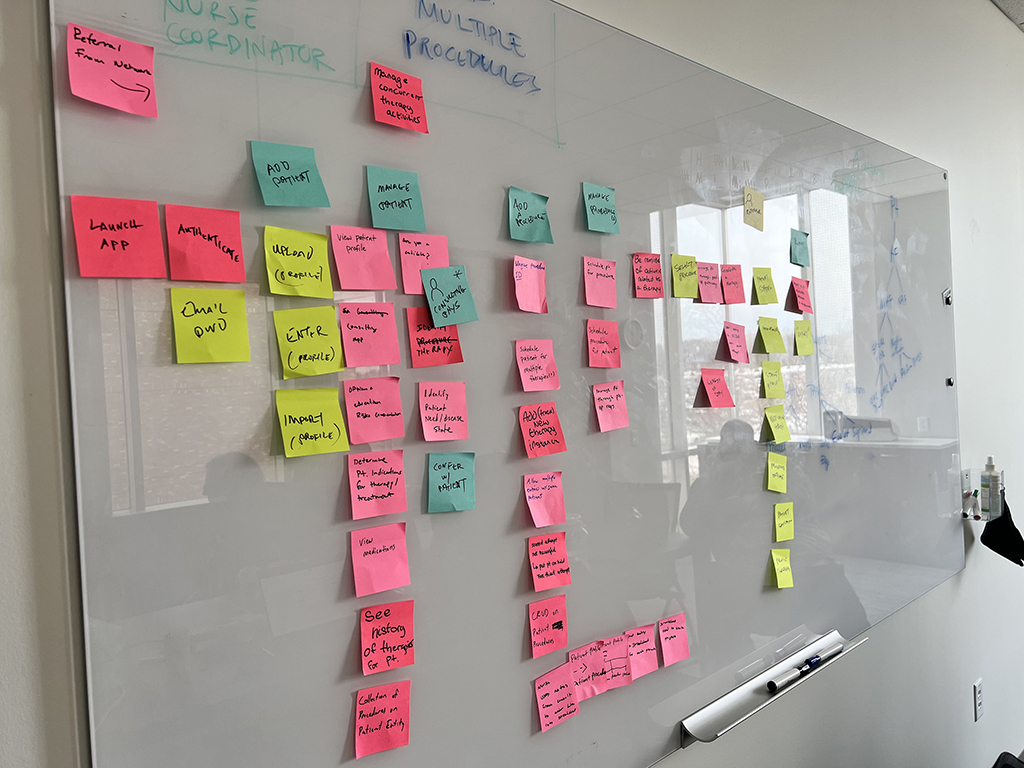Background
Product Description
This work sample is about optimization of workflow management software in digital health.
Hawkeye is a web-based product whose customers manage the patient journey from post-referral through post-procedure milestones.
The product’s primary users are nurses who coordinate AFib therapies within cardiovascular programs.
Core Team
As lead designer, I collaborate with my peers and conduct design activities in pursuit of viable solutions.
- Product Manager
- Product Owner
- Lead Engineer
- Senior Product Designer
- Associate Product Designer
Process
We operate on a balanced team model (à la the product trio) with continuous discovery and regular user check-ins.
Tasks, Compliance and the NCDR
Hawkeye consists of a set of recommended tasks to ensure program integrity and adherence to National Cardiovascular Data Registry (NCDR) guidelines

Tasks completed by users are mapped to NCDR guidelines and generally presented sequentially, though subsets may be completed in any order.
Program-Specific Tasks
Some programs require unique tasks in management of the patient’s journey.

Program-specific tasks were upon request added to the set of recommended tasks.
Burden and Annoyance
Tasks could be hidden at the program level upon request but the addition of any task was program-wide by default and, thus, visible to all users.
Consequently, the Hawkeye admin burden was excessive given the number of (a) unique tasks requests and (b) hidden tasks requests—the interface was cluttered with unwanted tasks for most customers.

Program-specific tasks in the set of recommended tasks were relevant to some programs but an annoyance to other programs
